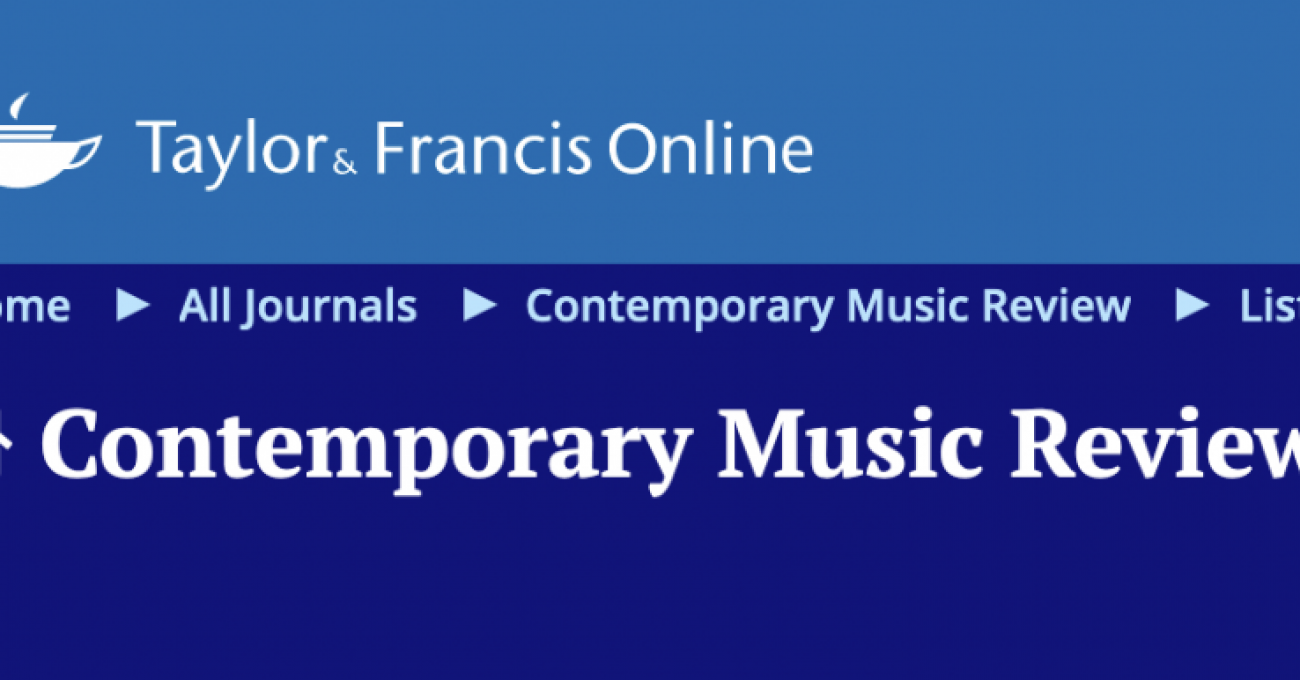Contemporary Music Review and Der Freitag – Dlugoszewski’s timbre-piano
More about Lucia Dlugoszewski’s timbre-piano: it just has been published an article written in collaboration with Kate Doyle, PhD, for Contemporary Music Review Special Issue: Engaging Analysis and Performance. Kate is assistant Professor of Music in the Department of Arts, Culture & Media at Rutgers University—Newark, and I had the pleasure of collaborating with her for several years now about the work of Dlugoszewski. This is our more recent production after partecipating to Toronto Symposium and to the American Musicological Society Annual Meeting. The title of the paper is Problem as Possibility: A Dialogue about Performance and Analysis with Lucia Dlugoszewski’s Experimental Notation as Case Study (https://doi.org/10.1080/07494467.2023.2193090).
Here is the abstract:
The musical score can be a site for dynamic exchange between performance and analysis, a place for conversation about material and meaning. As is typical in conversation, conundrums or disagreements generate new ideas and new forms; problems become possibilities. Such is the case in navigating the scores of Lucia Dlugoszewski, who sought radical ways to produce and notate sound forms from around 1950 until her death in 2000. This article is not intended to serve as a survey of Dlugoszewski’s work but to document an exploration of the role that dialogue plays when performing and analysing musical repertoires. Its two authors will perform an excerpt of an ongoing dialogue about the challenges of navigating Dlugoszewski’s innovative scores. A circularity emerges as every potential solution is performed, evaluated, and questioned anew; through this cycle, analysis and performance become a unified, continual process. A thesis emerges from the dialogue: Dlugoszewski’s scores are a documentation of logic that is not present as much as one that is, a kind of notation in reverse, an ideal realised through performance at the edge of practical execution.
Der Freitag and Die junge Welt also wrote about March Subtle Matters recital in Berlin at MaerzMusik Festival (music by Dlugoszewski, Corner, Dun). Quoting Der Freitag in the words of Michael Jäger, …the program announced “sound worlds full of unexpected textures and resonances,” and it was not an over-promise… In the compositions of Lucia Dlugoszewski (1925-2000), Tan Dun (*1957) and Philip Corner (*1933), playing not only on the keys but even more so on the strings under an open piano has always been the main move. We have heard it before, but in the compositions presented here (Tan Dun’s bears the name C-A-G-E, fingering for piano [1994], which refers not only to a sequence of notes, but also to that great initiator, and thus implicitly puts Cage on the same plane as B-A-C-H), the strings are often used like a zither, and sound almost like a zither, sometimes melodious, sometimes “sublimely” chaotic, both then occasionally doubled by the keys – a piano, so to speak, in dialogue with itself. As if communicating with [the] unconscious…

